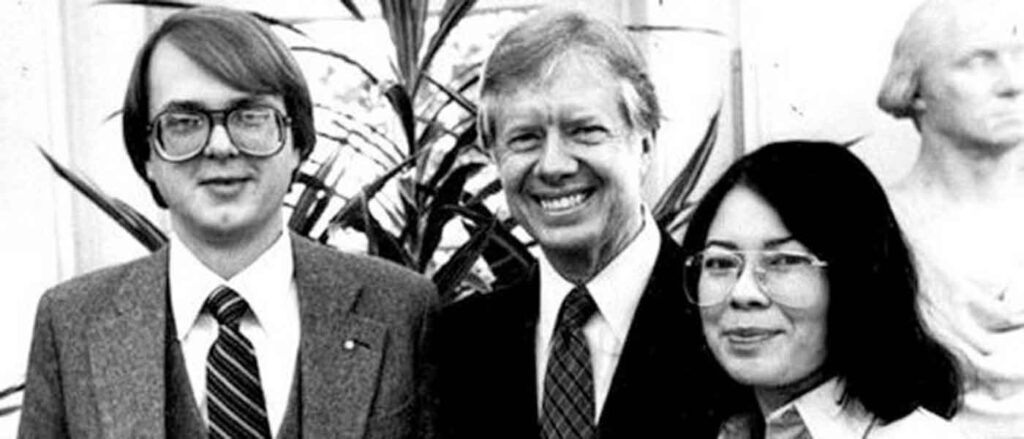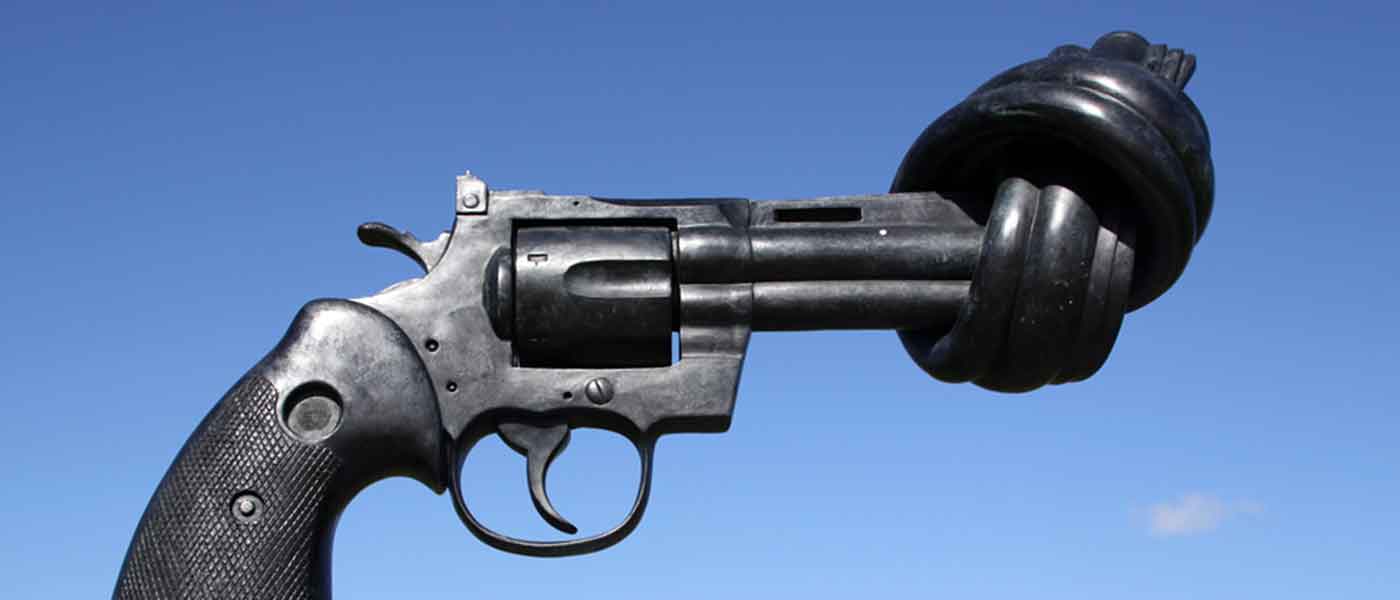Argo is primarily one man’s vision of how six Americans managed to flee Iran during the 1979 hostage crisis. On our first visit to the movie set, Ben Affleck joined a group of us for lunch at a tent set up by the set caterer. The food was what we had been told to expect from a location caterer, and Affleck lived up to his reputation as an intense director. He treated us to a tour de force, not a conversation about the film so much as an explication of his vision. Whatever misgivings we might have had, based on the script or what others had told us about the film, faded in the face of his clear vision.

As two of the six who lived through this adventure, we will tell you about some of the gaps between the film and reality — the things that aren’t true and those that are, the parts of the story that were left out, and the parts that were added.
The film begins with a narrative giving historical background about the shah, stressing his lavish lifestyle and the atrocities committed by the secret police, Savak. There is no mention of the shah’s efforts to modernize Iran, including importantly political rights and access to education for women. The narrator also notes that a democratically elected prime minister, Mohammad Mosadeq, removed the shah in the early 1950s, only to see him returned to power by a CIA/MI6 coup. We are not told that the shah was a reasonably successful and popular ruler for many years after the coup as the country modernized and became economically strong. In 1974, when Cora visited her parents, who were living in Iran at the time, she saw photos of the shah and his family in almost every shop. Some might think it was a form of protection, but almost every shopkeeper pointed out the photo, proudly telling her he was a much loved and good ruler.
It is true that Savak was ruthless, and that many people were imprisoned and tortured. What we are not told in the film is that this type of behavior by the rulers of Iran has a long history and that conditions became worse under Islamic sharia law. The film itself shows glimpses of the future that is to come, as bodies hang from construction cranes and men are shot in the street.
The narrative ends with the attack on the American Embassy on Nov. 4, 1979. Bits of that part of the script are accurate — the frantic attempt to shred classified documents, the storming of the main gates, the taking of an American at knife point, and the blindfolding of the hostages. But the details of our escape are reworked to compress the timeline. Eleven, not six, official Americans were able to exit the consulate building where they worked while the attackers captured the main building. Only five — Bob Anders, Kathy and Joe Stafford, and the two of us — eventually made it to safety.

In the film, we are taken in by the Canadian ambassador on the day of the attack. In reality, we followed orders and tried to make our way to the British Embassy with the help of a local Iranian employee. When we found the entrance to the British compound blocked by demonstrators, we made our way to the nearby home of Bob Anders. Bob was the senior person in our group and became our leader. We hoped to wait out the attack, expecting a return to normalcy would occur that day or the next. The embassy had been taken over nine months previously and was returned to us within hours.
Over the next week we managed to stay free with the help of others, both Iranians and foreigners. We hid first at the British embassy residential compound and then, after the British decided we were too much of a risk, in the homes of several of the hostages. A few days after we left the British, Bob Anders reached out to his counterpart at the Canadian Embassy, John Sheardown. When John got the call, he asked Bob why he hadn’t called sooner and offered to take him in. When Bob informed him he wasn’t alone, but had four others with him, John said, “Bring them all.” What a relief that was, although several days passed before we accepted the invitation because we were reluctant to involve others in our troubles.
This very courageous man and his wife, Zena, decided to take us in before consulting with their government. When we concluded it was no longer safe hiding in the homes of hostages who no doubt would be (and soon were) visited by “students” from the embassy, we accepted John’s invitation and were taken to the Sheardowns’ home. In the meantime, John had consulted with his ambassador, Ken Taylor, who received the go-ahead from Prime Minister Joe Clark to grant us sanctuary. In a clear statement of official sanction of this decision, Ambassador Taylor and his wife, Pat, took the Staffords into their home. We and Bob stayed at the Sheardowns’. In communications between the embassy and the foreign ministry in Ottawa, we became known as the “houseguests.”
Neither of the Sheardowns is mentioned in the film, even in passing. John and Zena were our hosts, our protectors, our friends, and John was almost like a father to us during the nearly three months we lived in that home. Their total exclusion from the film was, in our view, its greatest failing as history. And what about the sixth houseguest? Lee Schatz, the Agricultural Attaché, worked in an office building several blocks from the compound. He sought refuge in the Swedish Embassy, located in the same building. After a few days, he was moved to a residence, but after about ten days and with no resolution in sight, his hosts began to fear discovery and approached Ambassador Taylor to take Lee, thinking he would blend in better with Canadians. John Sheardown picked up Lee and brought him home, and the four of us settled into a routine.
In December, with the hostage negotiations going nowhere, a CIA disguise and exfiltration expert named Tony Mendez was tasked to develop a plan to get us out of Iran. The Canadians were committed to our safe return home, but they, like us, understood that risk grew with each passing day. Although Tony might disagree, as far as we know the Hollywood portion of the film is more or less accurate.

John Chambers, a Hollywood makeup artist and patriot who consulted for the CIA, helped Mendez buy a script and make a fake movie. An office in Hollywood was rented and staffed, and an advertisement for the movie appeared in The Hollywood Reporter and eventually became part of our cover documentation. When Tony and a second CIA officer arrived in Tehran, Tony carried the script and story boards for the movie. He did, however, pitch three scenarios to us — but unlike in Argo, none involved bicycles. One required us to be knowledgeable about the petroleum business, and another had us looking for teaching jobs even though the international school had been closed for some time. It was clear that Tony wanted us to pick the Hollywood story. He had the most confidence in it and made it highly backstopped. After a five-to-one vote for Hollywood, we went to work learning our parts.
The film showed glimpses of the hostages’ life at the embassy. This includes a terrifying mock execution. Although we don’t have firsthand knowledge, we were told by former hostages that this did occur. After first being bound and blindfolded, the hostages were not well-treated during the 444 days they were held. Most of the time, they were kept in isolation with little opportunity to communicate with each other. Some were tortured. The young Marines, most of them under 20 years of age, were singled out for brutal treatment. Former President Carter’s claim at the end of the movie that everyone came home “safe and sound” is not true. Some have suffered from mental illnesses, including alcoholism, or were unable to integrate back into normal life. At least one committed suicide and another developed MS while in captivity and died in his early fifties. This may be seen as yet another gap. No doubt Carter is convinced that his willingness to talk to Iran rather than use force helped insure the hostages were not murdered en masse. But the cruelty inflicted upon the hostages during the 444 days of captivity left many scarred for life.
Unlike the four of us, the Staffords had to hide their identities because there were servants in the Ambassador’s home. However, as they hardly ever left the house and went to their room whenever there were visitors for dinner, the servants figured out who they were. The cook told Kathy that if something happened, they could go to his home. It is amazing how many people were willing to help us despite the potential risk.
The visit to the bazaar, a tense moment in Argo, did not happen. We left the Sheardown residence only because it was for sale and we had to disappear when potential buyers came to look. Roger Lucy, Taylor’s deputy, took us in his car to his apartment. While the times spent at his apartment were enjoyable and a change from our daily routine, the rides to and from were nerve-wracking. People could see us as the car crawled through Tehran’s heavy traffic, and we were clearly Westerners. We feared being pulled over and found out. One snowy day, the car skidded off the road. Some men kindly lifted it out of the ditch, but an accident or serious illness could have compromised us.
The end of the movie makes the airport departure very dramatic. In reality, we left without incident, although we were frightened at times and there were real dangers. To show our inner fears and highlight the possible risks, the director and writer created scenes to try to display the internal tension we experienced. After three months of hiding, being in a crowded airport was scary in and of itself. The transition from the 4 a.m. darkness to bright fluorescent lighting made it worse. Once we got through the customs check, we had to go through two immigration checks and finally security.

Gaps in perception can occur in many ways. One became known to us while writing this article. Mark thought that the most difficult part of the exit through the airport was at immigration. Argo correctly emphasized a significant risk in the exit plan, the possibility that the immigration officer might seek to compare the copy of the disembarkation card in our passports with the copy that should be on file. There would be no file copy as we had not entered with the Canadian passports with which we were hoping to depart. When we reached the station where this process was to take place, no one was there. We debated whether to proceed down the hall to the beckoning departure lounge, but quickly decided that we probably needed a stamp from the missing man. Cora stepped behind the counter and called out loudly. A sleepy man in uniform emerged carrying a teapot. He took our passports, ripped out the disembarkation card copies without so much as a glance at us or the documents, and stamped us out of Iran. For Mark, this was the critical phase of the exfiltration. Security was little more than annoying. The mechanical delay, discussed in detail below, was potentially more dangerous, as those in our group who had worked in the tourist visa unit might be recognized by any number of Iranians. But the second immigration stop was the worst, both because it was the likeliest danger point and because we had to choose what to do in the absence of the officer, meaning we could have chosen incorrectly.
For Cora, the potentially intrusive security screening was a significant concern, even though we’d been told that non-resident foreigners were generally left alone as they were unlikely smugglers. The woman in front of Cora had a loud argument with the security screener, went running off, and was chased by a male security guard. Cora feared that internal checks might now be the standard as some Iranian women had been caught trying to smuggle money out of the country, hiding it within their bodies. However, the security screener smiled at her sweetly and barely patted her down. As it turned out, neither of us had our fears realized.
Once through the security check, we went to the waiting area. There was an announcement that our flight would be delayed three hours because of mechanical problems. Our stomachs dropped. Tony gathered us together and told us that, even though we had a second set of tickets on another airline, it would look very suspicious if we tried to exit the departure lounge at this point. After not more than 30 minutes, the announcer, to our great relief, said the flight was ready to board. On the tarmac, Bob signaled to Tony, pointing at the name on the airplane: Argaux. It was a region in Switzerland, but pronounced like Argo. To us it seemed like a sign.
The movie ends with hugs and handshakes as the jet exits Iranian airspace. The real celebration was more subdued, as we considered it unwise to attract attention. We did not know who was on the plane. There could have been someone with the authority to order a return to Tehran. The ending highlights another gap. The film made clear that one of us, Joe Stafford, had doubts about leaving. His attitude complicated the exfiltration, as he voted against the Hollywood scenario and never got into character with the same degree of enthusiasm the rest of us developed. The movie turned this on its head, as the plot takes Joe from skeptic to believer, and ultimately the man who saves us all by convincing the revolutionary guards to let us board the aircraft.
This counterfactual twist perhaps served to tell a deeper story, that the exfiltration was hardest for Joe because, unlike the rest of us, he didn’t believe in what he was doing. He felt that we were abandoning the hostages while the rest of us believed our presence in Iran would most likely complicate, if not prevent, the release of the hostages. We had been told that when the liberation of the hostages was finally negotiated, a group of Western ambassadors would escort the six of us and turn us over to the Iranians to be returned home along with the hostages. What would be the Iranian reaction? They would say they had been lied to as no one had told them of our existence and that perhaps we were spies as we had escaped. Either they would detain us or decide to detain all of the hostages along with us while they determined who we were. By staying, we would likely compromise any release of the hostages, and as each day passed, our discovery became more and more likely. Escape was the only answer.
Affleck’s vision was a powerful, wonderful drama, but not accurate history. Mark had for many years entertained the thought of writing a memoir, collecting information and recording memories with the idea of eventually producing a detailed report . Our adventure was a footnote to an important piece of history. But even as a footnote, it deserved an accurate accounting. The Canadians in particular should be honored for their selfless heroism. Argo was the stimulus that finally caused Mark to write Escaping Iran: A True Account of the Best Bad Idea. While there was never any hope that the book could compete with a Hollywood blockbuster, it was important that the facts be available to those who wanted to find them. It was a small way to document the gaps in truth between the movie and our reality.




